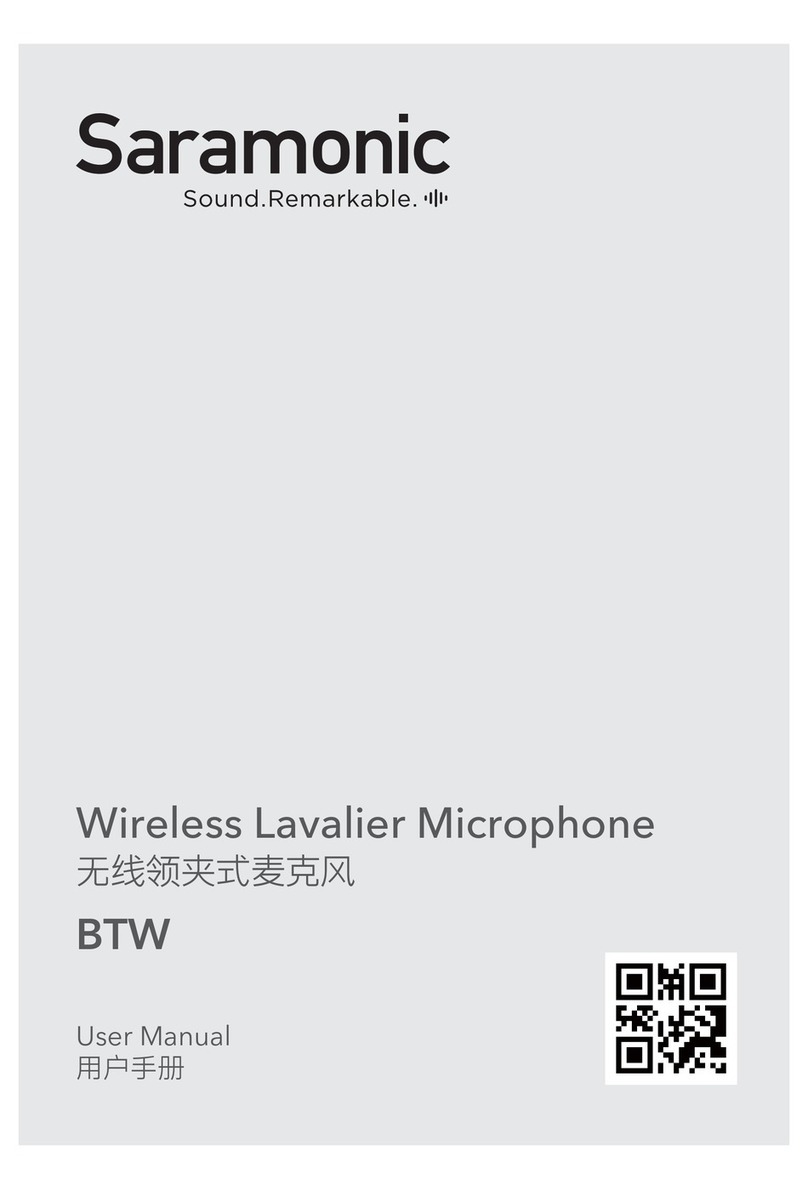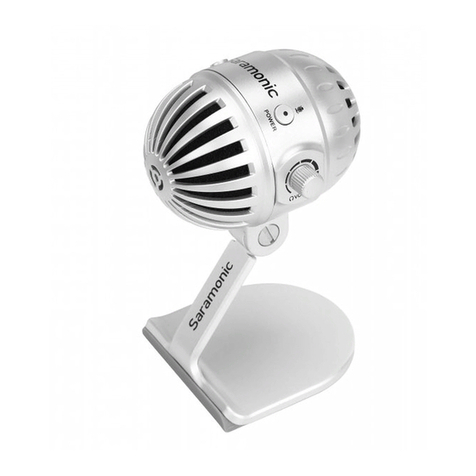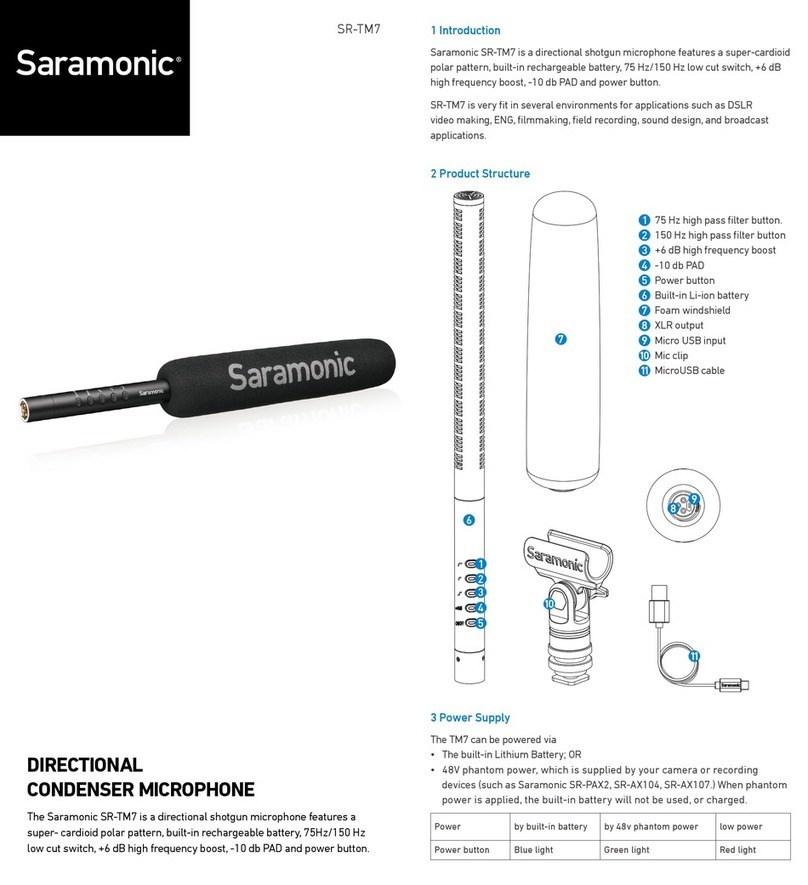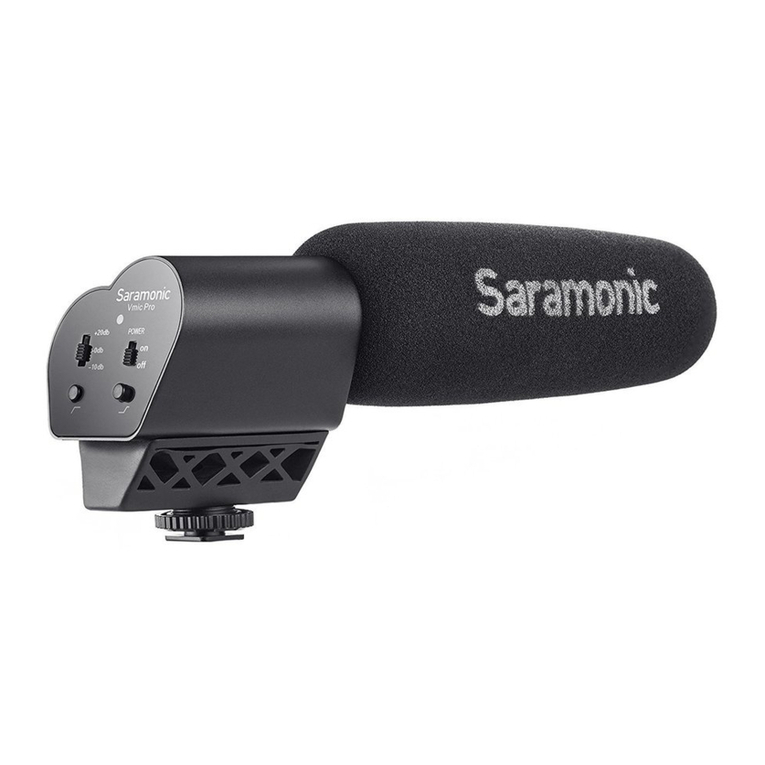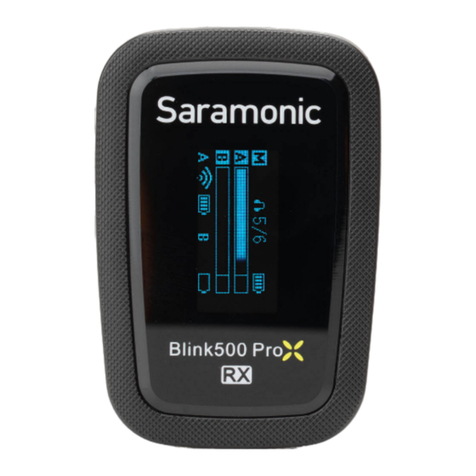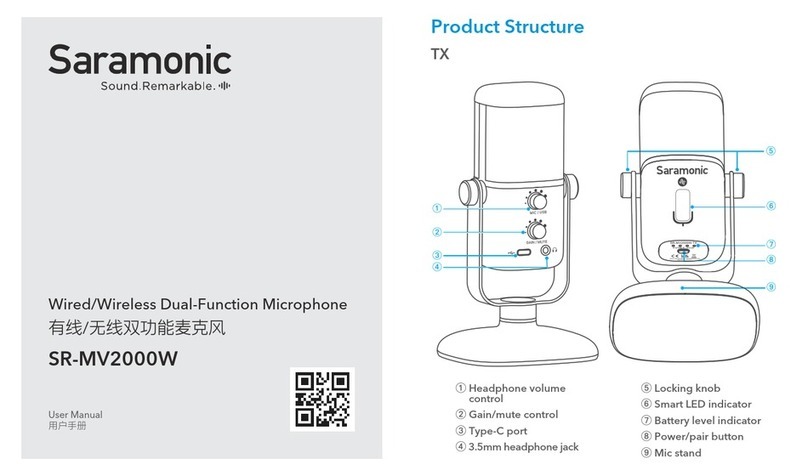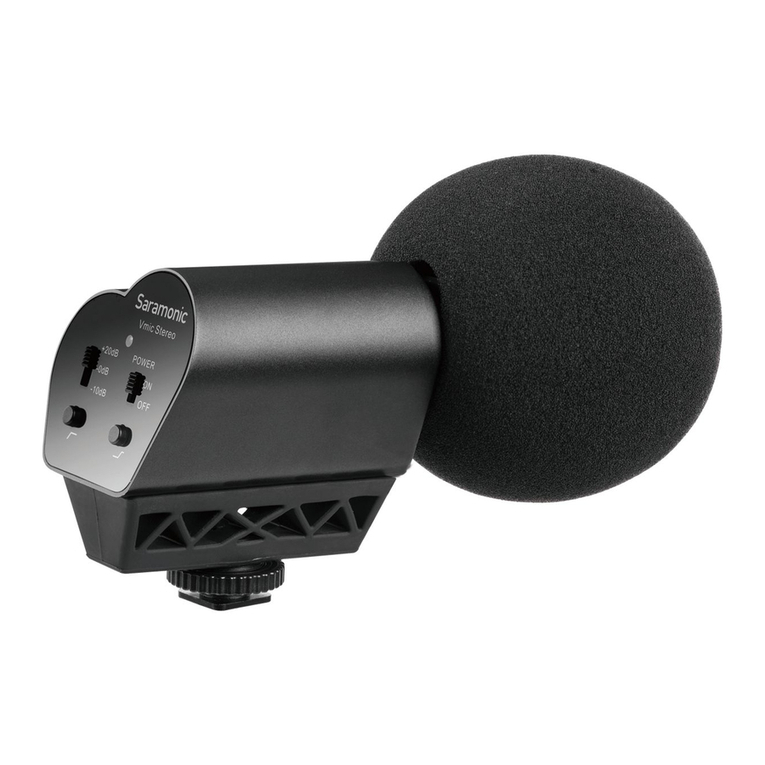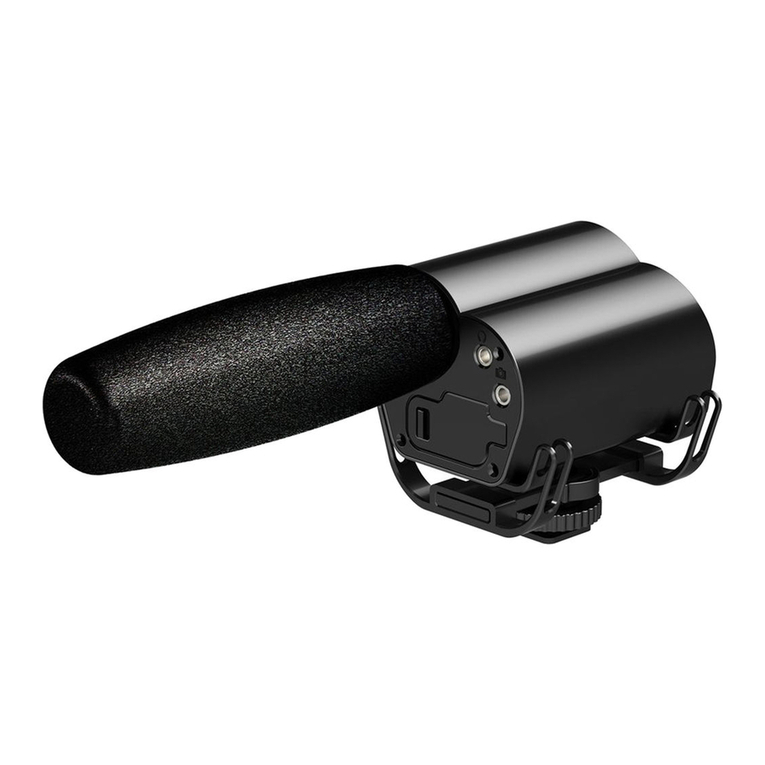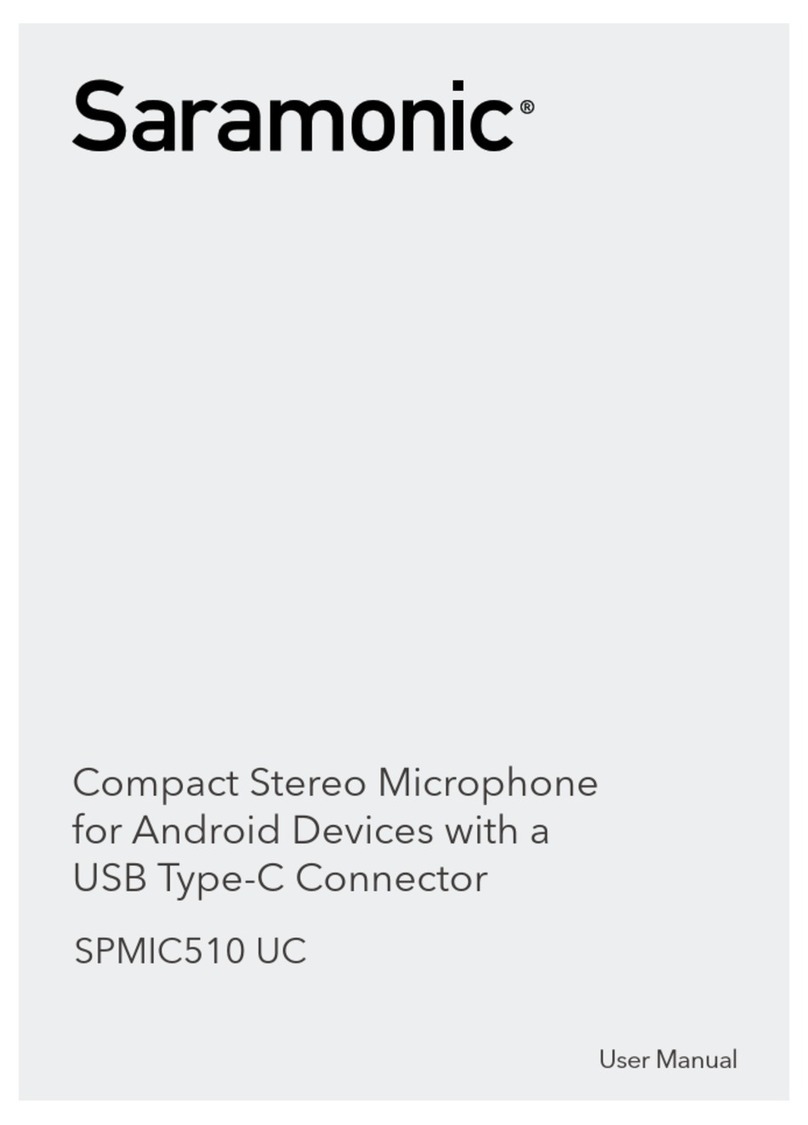
1 Product introduction
1.1 General introductions
The Saramonic SR-M500 is a pair of studio
quality condenser microphones with ultra-low
noise and full frequency response, designed
for studio recording and live on stage. They are
ideal for stereo recordings like drum overheads,
stereo room recordings, acoustic instruments,
choirs, or anywhere you would employ a small
diaphragm condenser microphone, either
individually or as a stereo array. Except for
recording music, the SR-M500 is also excellent
for environmental recordings and indoor
dialogue on film sets.
It features a cardioid polar pattern which
allows to record the desired sound source
while reducing the level of other surrounding
instruments, noises or sound sources.
1.2 Highlights
• 14mm capsule with gold-plated membrane
• Cardioid polar pattern
• Lightweight all-metal construction
• Ultra-low noise
• Gold plated XLR output connectors
• Powered by 48V or 24V phantom power
• Includes microphone clips and windshields
2 Set up guide
2.1 Powering the SR-M500
Connect all cables ready before supplying phantom
power to the microphones, and never remove the
microphone cable while the power is connected.
The SR-M500 requires 48V DC or 24V DC phantom
power. If the mixer or preamp does not contain this
phantom power, then an external phantom power
supply is needed.
Some phantom power supplies do not supply the
voltage at which they are rated. If the required voltage
is not supplied, the dynamic range and general
performance of the microphone will be reduced. We
strongly recommend to use a reputable high quality
power supply. Damage caused by a faulty power
supply is not covered under warranty.
2.2 Mounting the SR-M500
The SR-M500 is supplied with a pair of stand
mounts. They feature a standard 5/8" thread in
the base and a 3/8" thread adapter is supplied
to provide great versatility in mounting.
To mount the SR-M500, please place the base
of the microphone at the back of the mount
and firmly push down towards the front until the
microphone clicks into the mount.
2.3 General operation
The SR-M500 microphone head should always
facing towards the sound source that you wish to
record.
When recording any sound source, whether
it’s vocals, instruments or anything else, please
always spend time experimenting with the mic
placement, adjust the microphone position
as many times as you need to ensure you are
picking up the best possible sound. Then you
are ready to start the recording work.
2.4 Microphone placement
Whether using the SR-M500 as a single
microphone or stereo pair, there are no set rules
in the microphones placement, but the tips
below may help achieve great results in most
scenarios.
2.4.1 Stereo Spaced Pair
To mount SR-M500 in a spaced pair
configuration, you’ll need to place the
microphones on two separate microphone
stands. It is best to experiment with the exact
positioning and direction of the microphones
while listening to the signal, to ensure phase
compatibility.
The Spaced pair is ideal for recording sound
sources or instruments that cover a wider
area such as choirs and ensembles, or require
more than one point-source to pick up a true
representation of the sound. It can also produce
incredible results on individual instruments when
used correctly.
2.4.2 Stereo X-Y
To mount SR-M500 in X/Y configuration, you’ll
need to place the microphones either on a
stereo bar, or on two separate microphone
stands. The microphones should be placed
at 90º to one another (right angle) with the
capsules stacked above each other vertically.
X/Y configuration makes the sound you record
not only sounds great in stereo, they will also
sound great when playback in mono. While X/
Y configuration is great for mono compatibility
and ease of use, the stereo image will not be
as wide as other techniques such as ORTF or a
spaced pair configuration.
2.4.3 Stereo ORTF
To mount SR-M500 in ORTF configuration,
you’ll need to place the microphones either on
a stereo bar, or on two separate microphone
stands. The microphones should be placed at
110º to one another with the capsules 17cm
apart and facing outward.
The ORTF technique was originally designed to
mimic the response of human hearing. In ORTF
configuration, the increased distance between
the capsules will produce a wider stereo image
than X/Y configuration.
